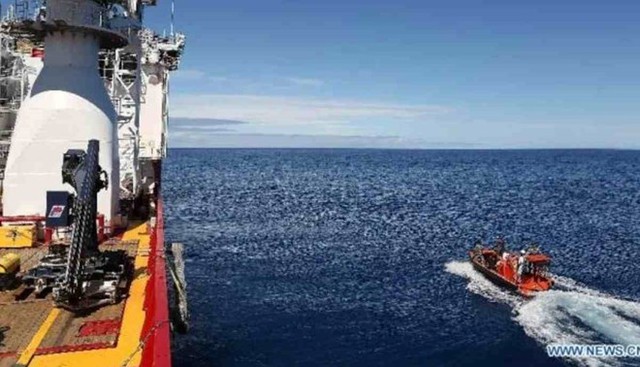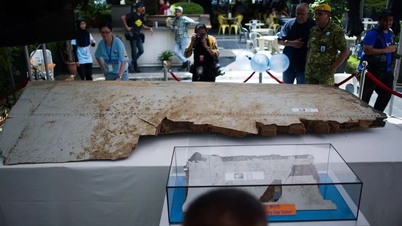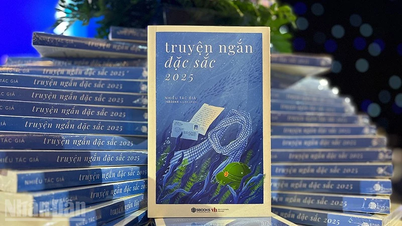Image of MH370 plane wreckage at the bottom of the sea created by AI

Image believed to be the wreckage of MH370.
USA Today's latest MH370 news report said a Facebook post on May 30 included three images showing the wreckage of a plane underwater along with photos of skeletons sitting in passenger seats. The post read: "Breaking News: Drone Reveals Location of Malaysia Flight 370 After Years of Mystery," with the hashtag "#MH370LocationRevealed."
However, according to experts and online detection tools, these images were created using AI. There is no credible news that Malaysia Airlines Flight 370 has been found. All of them include elements consistent with AI-generated images.
James O'Brien, a professor of computer science at the University of California, Berkeley, told USA Today: The scene in the photo is very clear, not real. The letters and logos on the side of the plane appear in bright colors and in different positions in the two photos that are said to be of the wreckage. There are also other differences between the two photos, even though they show the same subject.
"In one photo, there is no '370' on the side of the plane, the nose has been peeled off and the front right door is missing. In the other photo, everything is put together and the number '370' is neatly written on the plane," he analyzed, saying that the skeletons sitting on the seats were arranged.

AI-generated images.
Hive Moderation's AI detection tool found images were 99.3%, 98%, and 97.5% likely to contain AI-generated content or deepfakes, respectively.
There is no credible news to support the post's claim that the wreckage has been found. The post links to an article claiming the plane was found using an "advanced underwater drone," but there is no evidence of that either.
Hopes raised for finding MH370 with new underwater technology

Australian Navy ship joins the search for MH370 on April 7, 2014. Photo: Xinhua
Malaysia Airlines Flight MH370 disappeared on March 8, 2014, with 239 people on board. Despite an extensive search effort, the plane's final location has not been determined. MH370 has become one of the world 's greatest aviation mysteries.
A team of scientists from Cardiff University (UK) led by Dr. Usama Kadri, has published new research exploring the possibility of detecting underwater acoustic signals created by plane crashes, such as the alleged impact of MH370, The Conversation reported.
The team used hydrophone technology – which picks up sound waves and pressure changes in the ocean. This technology has shown promise in detecting pressure signals from a variety of events, including plane crashes. These types of signals can travel thousands of kilometers, making hydrophones a valuable tool for identifying and classifying events in the marine environment.
The team analyzed data from Comprehensive Nuclear-Test-Ban Treaty Organization (CTBTO) hydroacoustic stations, focusing on data from stations at Cape Leeuwin in Western Australia and Diego Garcia, an island in the Indian Ocean.
Both stations were operational around the time MH370 is believed to have gone down. CTBTO stations have previously detected distinctive pressure signatures from plane crashes as well as earthquakes of varying sizes at distances of more than 5,000km. The team hopes to identify any potential acoustic evidence of MH370's crash.
Previous analysis by scientists at Curtin University and later by the team confirmed the signal from an unidentified source recorded at the Cape Leeuwin station, in the direction of the 7th arc. The 7th arc is understood to be a crash site within 120km of the last estimated position of MH370.
According to the team, a 200-ton plane falling at 200 meters per second would release kinetic energy equivalent to a small earthquake. It would be large enough to be recorded by hydrophones thousands of kilometers away.
Given the sensitivity of hydrophones, it is highly unlikely that a large aircraft impacting the ocean surface would not leave a detectable pressure signature, especially on nearby hydrophones.
To help settle the debate over the possibility of detecting acoustic signals from MH370, a practical approach might be to conduct controlled explosions along the seventh arc. If the signals from those explosions show a similar pressure amplitude to the signal of interest, it would aid in focusing future searches on that signal.
While the team's research does not pinpoint the exact crash site of missing flight MH370, it highlights the potential of hydroacoustic technology in solving this aviation mystery.
By improving methods and conducting further tests, the team hopes to provide new insights into the fate of MH370 and improve responses to future maritime incidents.
Source: https://giadinh.suckhoedoisong.vn/thong-tin-moi-nhat-ve-may-bay-mh370-mat-tich-bi-an-xuat-hien-hinh-anh-xac-may-bay-mh370-duoi-day-bien-172240616065852723.htm









































































































Comment (0)